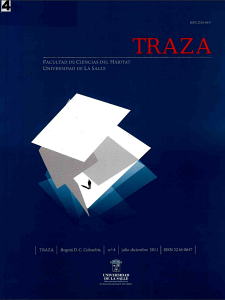Abstract
This paper presents the results of the characterization and evaluation of a sample of apartment buildings built in central areas of the city of Havana during the forties and fifties, designed by a number of architects considered to be significant exponents of the Modern Movement. It starts by assuming the need to learn about past experiences in order to project the future, and about the apartment building’s importance in land use as a principle of urban sustainability. The article presents the proposed evaluation method on the basis of the variables and parameters identified, and discusses the main results that make it possible to characterize the standard, the volumetric-spatial typology and the formal solution of the studied sample. The detailed information about the studied buildings is recorded in a database with over three hundred apartment buildings in the city that have been characterized and assessed in a number of researches carried out in the Department of Architecture of Havana during the past ten years, and which are still being performed.Downloads
Download data is not yet available.



